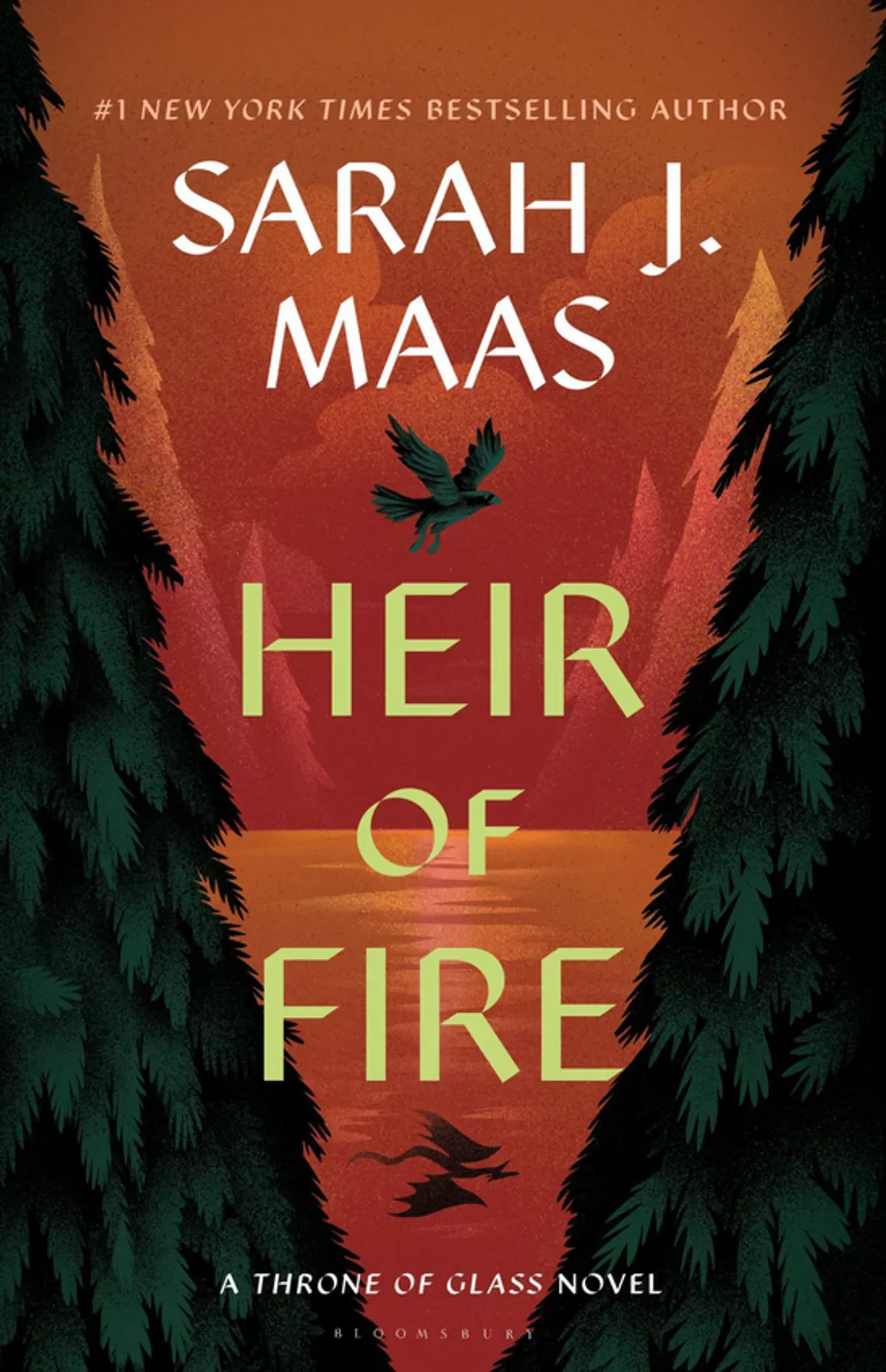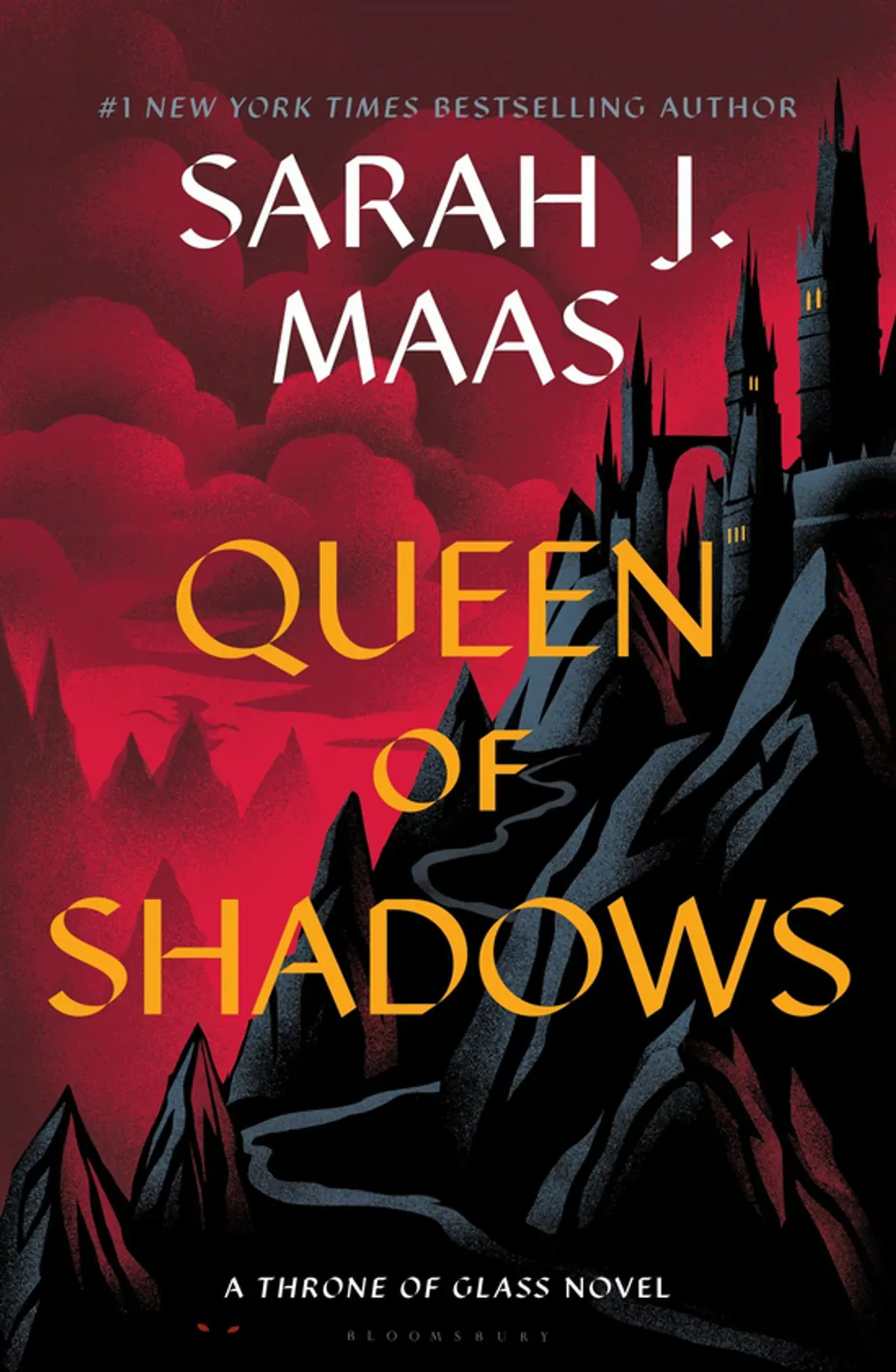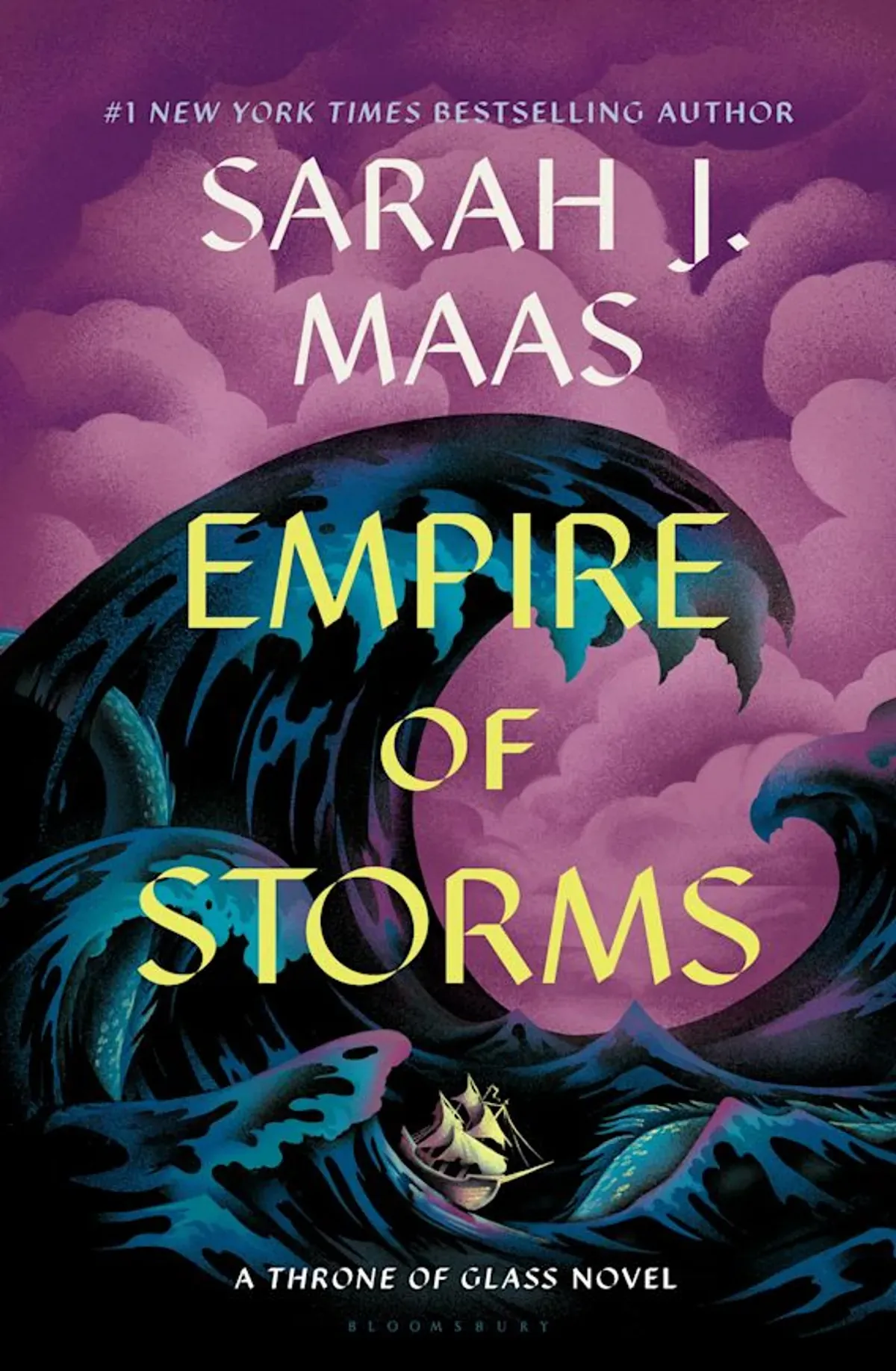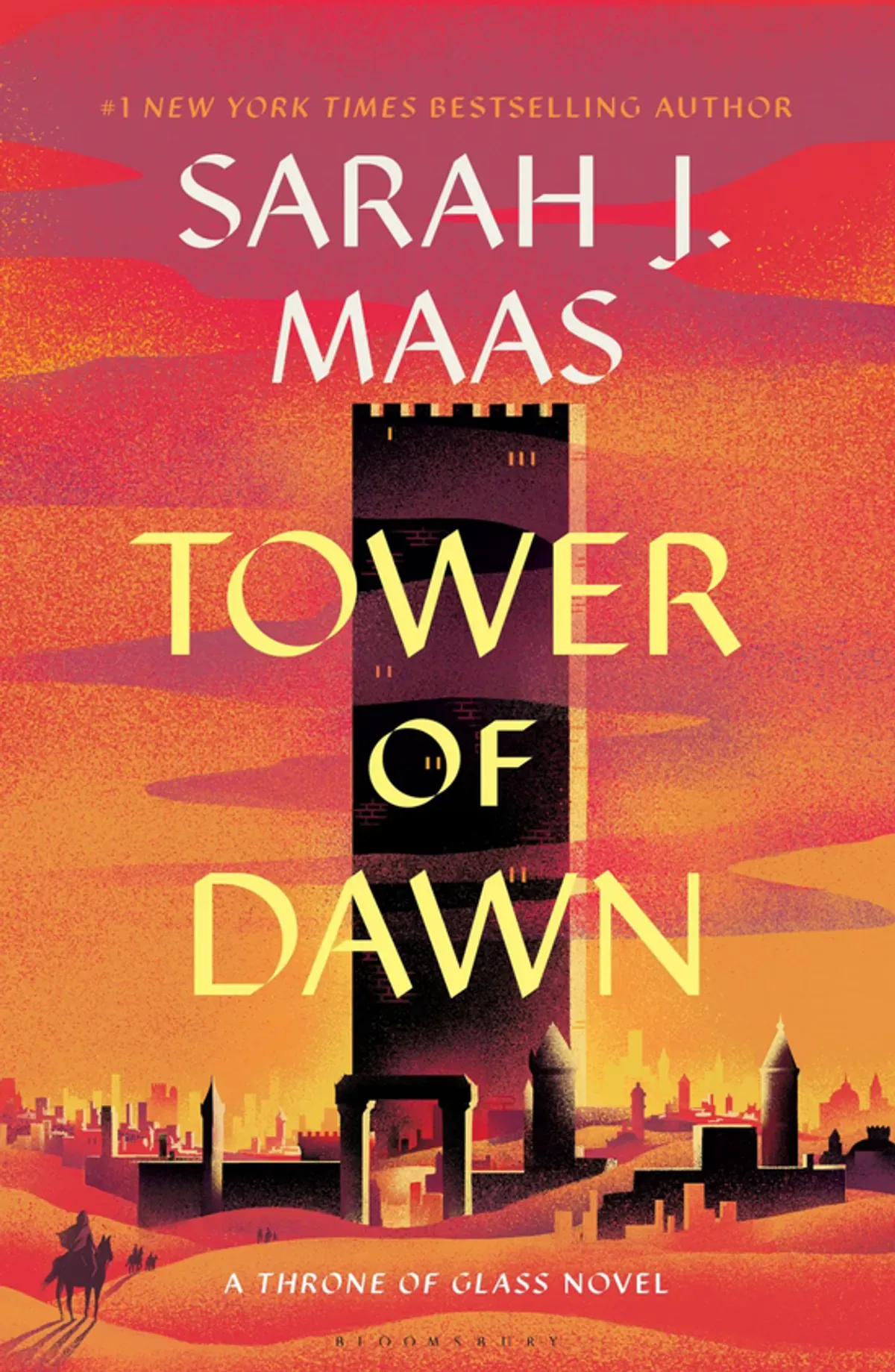Heir of Fire
by Sarah J. Maas
Reviewed by Devin Ford on April 3, 2025
Est. Reading Time: 12 min

Quick Info
Title: Heir of Fire
Author: Sarah J. Maas
Series: Throne of Glass (Book 3)
Published: September 2, 2014
ISBN-13: 9781619630659
At a Glance: The Queen’s Awakening
In Heir of Fire, the Throne of Glass series reaches a pivotal turning point when it moves beyond Adarlan’s boundaries to explore the expansive continent of Wendlyn. Celaena Sardothien journeys to a new realm to find solutions about the mysterious Wyrdkeys after suffering a profound personal loss. Rowan Whitethorn, a Fae warrior who has existed for centuries, takes on the responsibility of training her to awaken her suppressed magical powers. As Celaena confronts her traumatic past and true heritage, the narrative introduces compelling new perspectives: Manon Blackbeak is a toothless witch who trains to become an air warrior in the King of Adarlan’s army while Aedion Ashryver serves as a general who holds secrets from Celaena’s past. The danger mounts for Chaol Westfall and Dorian Havilliard in Adarlan because the king’s sinister plans continue to progress. The individual storylines converge into a dramatic finale which shifts the series from a personal quest to a grand battle for the world’s destiny.
A World That Finally Takes Flight
Heir of Fire extends worldbuilding to an epic level, growing the series beyond the limited environments of the first two novels. The discovery of Wendlyn brings both a novel geographical setting and an entirely distinct cultural and political environment beyond the sea from Adarlan. Maas develops a multi-layered world with unique regions and distinct magical traditions through this expansion.
Within Wendlyn the Fae territories host ancient magical societies that maintain distinct hierarchies and traditions as well as complex interactions with mortal worlds. Mistward Fortress and its adjacent forests serve as dynamic training grounds with inherent dangers and wonders which exceed basic character development functions.
The world gains additional complexity when the Ironteeth witches and their clans make their entrance. The mountain fortresses combined with ancient traditions and the Blackbeak Matron’s harsh training program for wyvern pilots form an exclusive culture that exists outside the established human and Fae territories.
The magic system achieves the complete explanation readers have long sought from earlier books. Celaena’s magical training with Rowan allows readers to understand elemental magic functions and its limitations and dangers when misused. The relationship between magical abilities and ancestry enriches the world’s historical narrative through its depiction of magic users’ suffering under Adarlan’s oppressive rule.
The worldbuilding elements create a unified experience instead of feeling disconnected. The ancient battles between Fae kingdoms together with conquered peoples’ subjugation and dark powers’ rise form an interconnected history that shapes present occurrences. The seamless integration of worldbuilding elements turns an initially ordinary fantasy setting into a realm of true depth and meaning.
Characters: Growth Through Fire and Pain
Heir of Fire excels in its character development with Maas masterfully directing Celaena’s transformative journey. Instead of only providing Celaena with new powers or obstacles, Maas makes her address her childhood traumas and self-delusions that have shaped her character. The mental transformation journey holds equal significance as her physical training because it leads to true metamorphosis instead of just increasing her power.
Rowan Whitethorn emerges as the perfect mentor for Celaena by remaining steadfast and demanding while refusing to enable her self-pity. Their bond grows naturally from initial antagonism through gained respect to ultimate trust. Rowan Whitethorn’s extensive life experience combined with his personal losses elevate him beyond the role of a teacher while his personal journey mirrors the healing path Celaena undergoes.
From her first appearance Manon Blackbeak stands out because she embodies every stereotype of villainy as she is portrayed to be ruthless and trained to be merciless while fighting for the antagonist. The connection between Manon Blackbeak and her wyvern Abraxos alongside her critique of witch traditions enables Maas to build a complex character whose growth reflects the self-discovery journey of Celaena.
Characters who stay in Adarlan experience equal levels of significant development. Chaol battles with his divided loyalties and narrow view of the world while Dorian learns about his dangerous magical powers in a place where possessing such abilities leads to death. Aedion Ashryver is a secondary character who gains significant depth through complex motivations that surpass mere plot requirements.
The character development in this volume stands out because it evolves through interactions between characters rather than isolated growth. Character growth occurs through their relationships with others manifested from conflict situations and mentorship bonds or through forming surprising alliances. The interconnectedness produces a network of relationships that feels authentic and impactful.
Plot: Multiple Threads Woven With Purpose
In Heir of Fire, Maas demonstrates substantial improvement in her storytelling skills through a sophisticated plot structure. This book discards the single-location competition structure of the first book and the mystery elements in the second book to successfully manage multiple international storylines without compromising its narrative drive.
The pacing benefits dramatically from this approach. The story moves to another plot thread that approaches a critical moment when one storyline reaches a natural pause. The narrative rhythm engages readers with seamless transitions between potentially dull training sequences and political plots while providing each storyline the opportunity to unfold naturally.
The narrative behind Celaena’s training arc distinguishes itself from common fantasy tropes because her progress emerges from repeated failures and personal challenges rather than unexpected victories or innate abilities. Her achievements seem authentically earned due to her slow and steady development instead of being handed to her through plot contrivances.
Although Manon’s storyline appears to stand apart from the main plotline at the start it develops into a powerful narrative force. The process of selecting and training her wyvern generates unexpected emotional depth while setting up conflicts that will shape future books in the series.
The story centered in Adarlan through Chaol and Dorian along with the developing rebellion serves as a crucial link to prior books and moves forward the main political narrative. The king’s dark powers continue to escalate danger which keeps the story tense until the main character reaches his location across the world.
The plot achieves its greatest success by weaving together separate storylines that unite both thematically and narratively during the book’s concluding chapters. The conclusion’s revelations and confrontations transform previous plot elements while establishing major future conflicts.
Prose: A Writer Coming Into Her Power
Maas’s writing in Heir of Fire shows significant development when compared to her previous books. The first two books’ awkward transitions and uneven pacing no longer exist as Maas now presents confident storytelling that expertly balances action with emotion and description.
The narration maintains evocative descriptions yet avoids excessive decoration. Maas expertly uses sensory details to immerse readers through vivid depictions of Wendlyn’s old forests and Ironteeth witches’ harsh training areas as well as the mental wounds of her characters without providing unnecessary elaboration.
The dialogue functions as a natural mechanism for character development by creating unique voices for each major character. The way Rowan delivers terse commands and how Manon performs cold calculations together with Aedion’s sardonic observations show who they are beyond plot advancement. Character relationships evolve through their verbal exchanges which demonstrate subtle yet powerful changes.
The multiple POVs that were difficult to manage in earlier books have now transformed into a strength for the narrative. The shift between different viewpoints happens at logical pauses with definite separations and each perspective serves the bigger story instead of breaking it apart. The unique voice and perspective of each viewpoint character shapes their interpretation of the events.
The prose stands out for its ability to navigate emotional complexity. Maas effectively portrays Celaena’s struggle with her traumatic past, Manon’s surprising connection with her wyvern and Dorian’s fear of his newfound abilities through authentic and powerful psychological depth. The emotional scenes emerge naturally through character development and the situations they encounter.
Between the Sheets: Character Growth Over Romance
BroMantasy Spice Rating
Barely There
(Chaste Romance)
Heir of Fire sustains the limited romance intensity from earlier novels which reaches a spice level of 🌶️ (1.0). Character development in relational dynamics revolves around emotional bonds instead of physical intimacy by emphasizing trust building and mutual growth over romantic and intimate relationships.
Celaena and Rowan evolve from rivalry to profound trust yet maintain their relationship as purely platonic in this volume. They connect through mutual experiences of trauma alongside respect earned in trying times while understanding each other at a deeper level than physical attraction. These characters progress through their own individual journeys while establishing a deep connection with each other.
The books provide thoughtful conclusions for previous romantic relationships instead of leaving them unresolved. Celaena’s character development progresses with mature romantic elements as influences from relationships with both Chaol and Dorian but these do not dominate her journey.
New character interactions set up future romantic opportunities while concentrating on character growth throughout this plotline. The narrative benefits from this approach which keeps significant character development and major world-altering threats at the forefront.
Bro Reading Comfort: No Concerns in Public
Readers won’t face any discomfort when reading Heir of Fire in public spaces because it maintains a level of 😳 (1.0). The book lacks explicit content and avoids uncomfortable scenes that could make public reading awkward. The romance in the book maintains a controlled approach that prioritizes emotional bonds over physical relationships.
The fantasy book cover clearly marks the book’s genre to prevent any misunderstanding about its content. The book’s approachable nature allows hesitant readers to start Maas’s series since fantasy components and character arcs dominate the romantic narrative.
Darkness That Raises the Stakes
The darkness in Heir of Fire builds upon the series’ growing intensity by achieving a level of 💀💀💀 (3.0). The story stays within young adult parameters while presenting more serious themes and significant consequences than earlier books. Celaena faces the devastating deaths of her parents and the collapse of her kingdom which molded her into who she is today. The narrative conducts deep exploration of psychological wounds instead of offering superficial treatment.
Valg demon possession creates true horror by transforming characters’ personalities and compelling them to perform horrific acts against their will. The king’s dark experiments unleash visceral outcomes that transform political oppression into a more deeply unsettling phenomenon.
The Ironteeth witches demonstrate savage training methods and merciless disposal of their weaker members to deepen the story’s darkness yet moments of unexpected compassion within Manon’s arc create a contrast to their brutality. The story maintains its dark elements in check while preserving its real challenges.
The enhanced darkness within the narrative functions primarily as a tool for character development instead of just setting the mood. Characters undergo significant development and altered relationships through their traumas and difficult choices which create emotional weight that turns fantastical conflicts into meaningful events.
Book Battlefield: The Series Transformed
The Throne of Glass series becomes an epic fantasy with deep emotional resonance beginning with Heir of Fire. The book displays its transformation throughout its complete structure as it showcases expanded worldbuilding along with complex character development and assured writing style.
Through multiple perspectives spanning several continents Maas constructs a story of true epic scale which shows a conflict with global ramifications beyond personal challenges. The series expands its scope while maintaining the character depth that made previous books successful and combines epic fantasy elements with personal character stories.
Since the series began Maas has shown outstanding development in her writing skills. The early books’ inconsistent pacing and stylistic challenges eventually evolve into confident storytelling that equally manages complex emotional depth and multiple plotlines. The series has been elevated through both technical progress and an expanded thematic vision that shows deepening ambitions.
Those who have read Maas’s later works such as A Court of Thorns and Roses will identify this book as the moment her distinctive storytelling style starts to fully develop. Trauma healing themes combined with moral complexity of mighty entities alongside personal relationships existing alongside global wars define the hallmarks of her subsequent writing.
Should You Bother?
For Series Readers: Readers who completed the first two books will discover their dedication rewarded when they reach Heir of Fire. As the series progresses, it broadens to reveal deeper layers while delivering meaningful character resolutions and introducing transformative new elements that reshape your view of this world.
For Fantasy Readers: Readers who considered the first two books standard will find a more ambitious fantasy narrative in this installment. The series’ expanded worldbuilding combined with its complex magic system and morally complex characters create a narrative worthy of comparison with other respected fantasy works.
For Maas Fans: Those who started with Maas’s subsequent works will identify Heir of Fire as the publication where her unique narrative style reaches full maturity. Maas develops characters through trauma while achieving balance between darkness and connection as well as combining personal and epic stakes to define her best work.
Final BroMantasy Verdict
Sarah J. Maas established her fantasy authority with Heir of Fire by expanding her young adult series into a grand epic filled with emotional complexity. The series demonstrates substantial progression by implementing multiple captivating plotlines alongside new geographic explorations and unwavering attention to traumatic experiences and their consequences.
The character development remains robust despite the series broadening its scope. The introduction of new settings, magical elements, and political conflicts helps enhance our understanding of the main characters and their personal journeys. Celaena earns her confrontation with her past and true identity through authentic struggle instead of receiving it through convenient revelations.
Manon Blackbeak introduces her engaging perspective by transforming from a potential one-dimensional villain into a complex character through her bond with her wyvern and her skepticism towards witch traditions. The narrative reveals Maas’s enhanced ability to develop characters that transcend basic hero/villain roles through their moral intricacies.
The book maintains suitable boundaries for young adult readers while addressing serious themes that deliver true emotional depth. Personal stakes emerge from the exploration of grief and trauma which persists alongside a conflict reaching world-threatening dimensions. Maas achieves her strongest work through a distinctive combination of personal character moments with broader epic fantasy elements.
Readers who started with the initial uneven books discover Heir of Fire makes the investment worth it through major enhancements across all storytelling dimensions. Readers who start with Maas’s later works will recognize in this volume how the author discovered her defining voice and themes.
The expansion of its world alongside more complex characters and elevated narrative ambitions transforms Heir of Fire into a potent and resonant work that rewards readers with its transition of the Throne of Glass series from an enjoyable young adult fantasy into a powerful and engaging narrative. The book serves as a remarkable fantasy novel while marking a significant evolutionary step for Maas as she emerges as a top author in the genre.
You Might Also Enjoy
Frequently Asked Questions
Is this book part of a series?
Yes, this is book 3 in the Throne of Glass series.
How spicy is the romance?
We rate the spice level at 🌶️ (1/5). Minimal romantic content that emphasizes emotional connection over physical intimacy
How uncomfortable is it to read in public?
We rate the public reading discomfort level at 😳 (1/5). No content that would cause reading discomfort in public spaces
How dark are the themes in this book?
We rate the darkness level at 💀💀💀 (3/5). Increased stakes with deeper emotional trauma, supernatural possession, and political consequences
What age group is this book for?
This book is generally recommended for adult readers due to its mature themes. We recommend checking specific content warnings if you are sensitive to certain topics.





